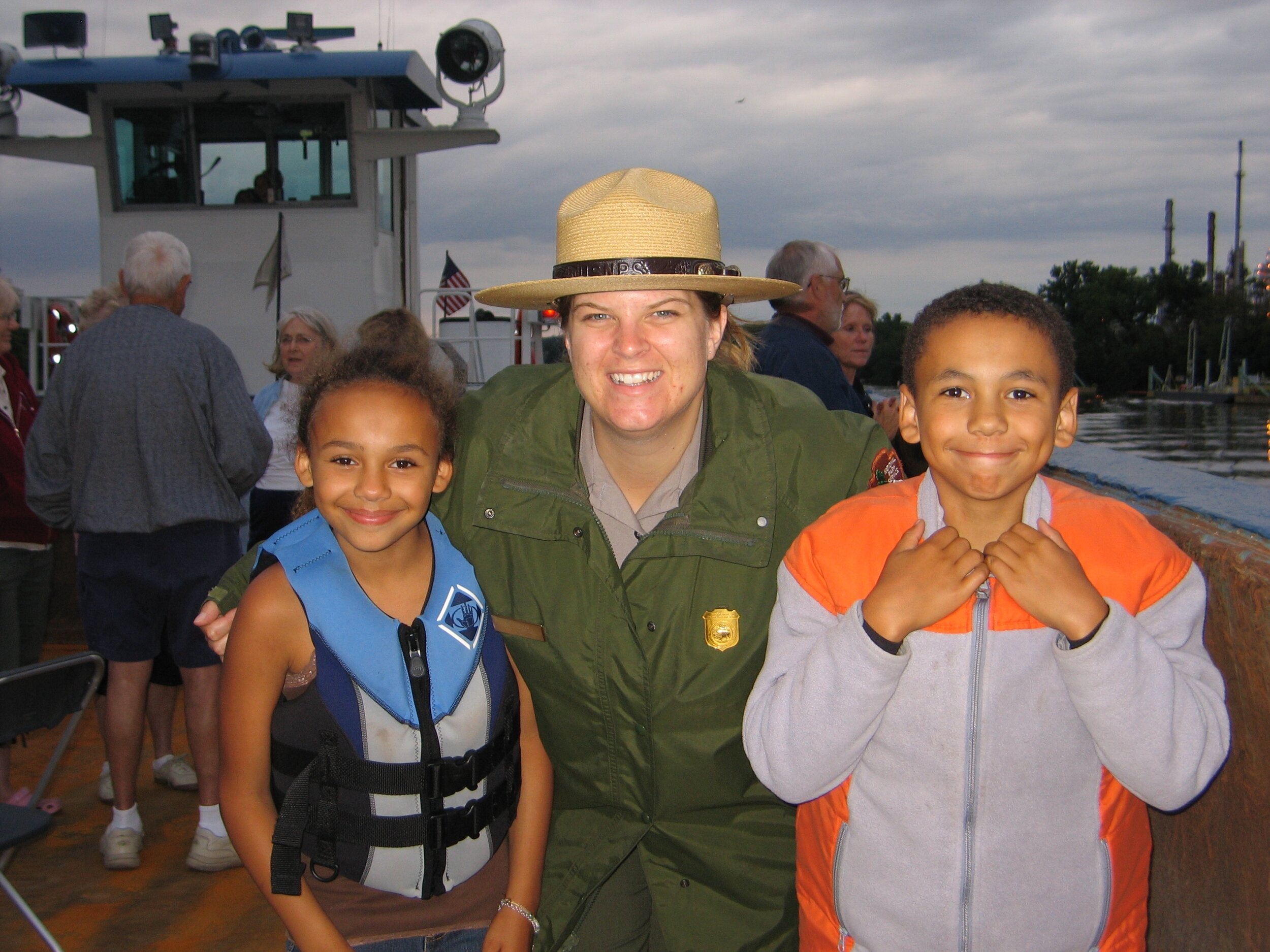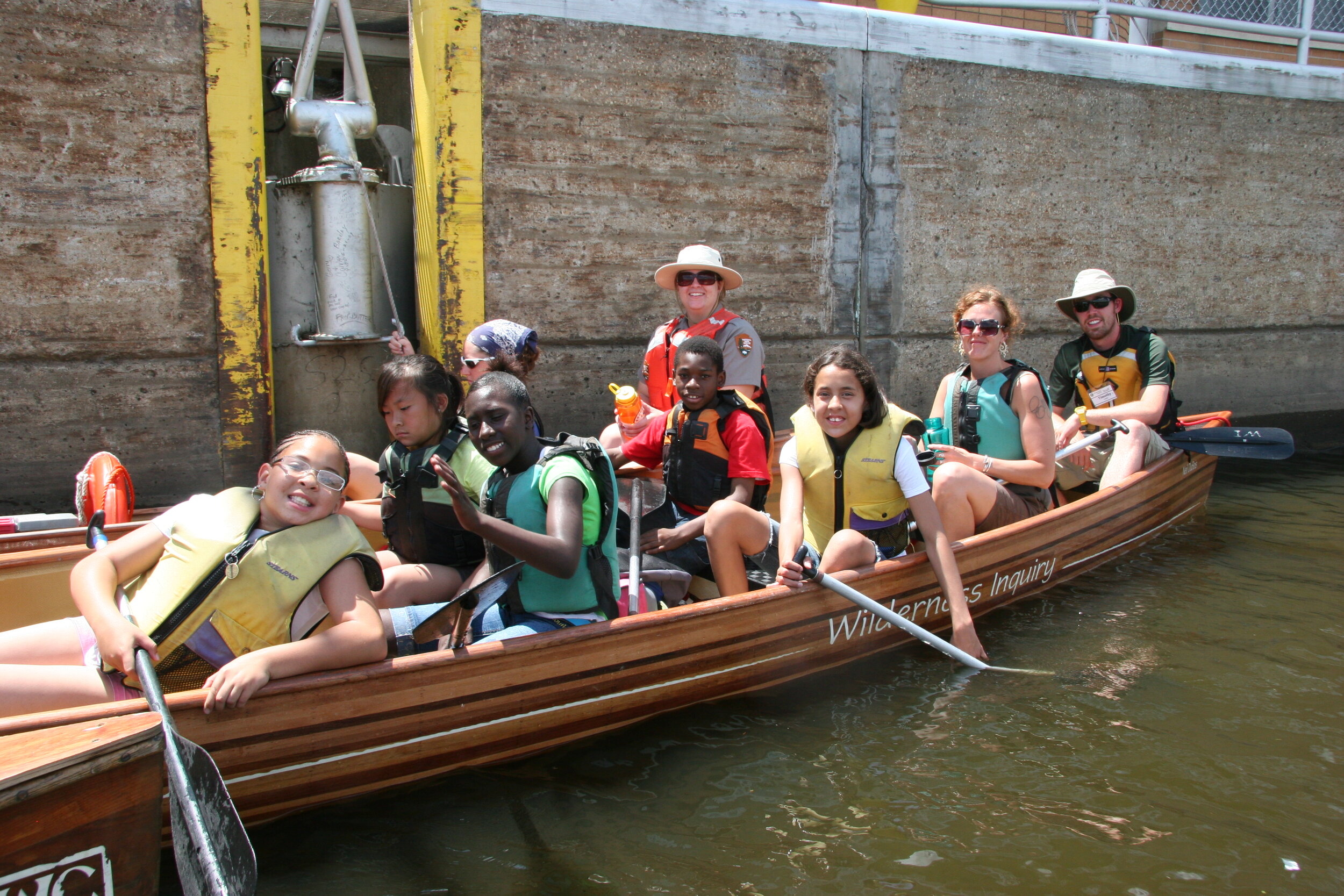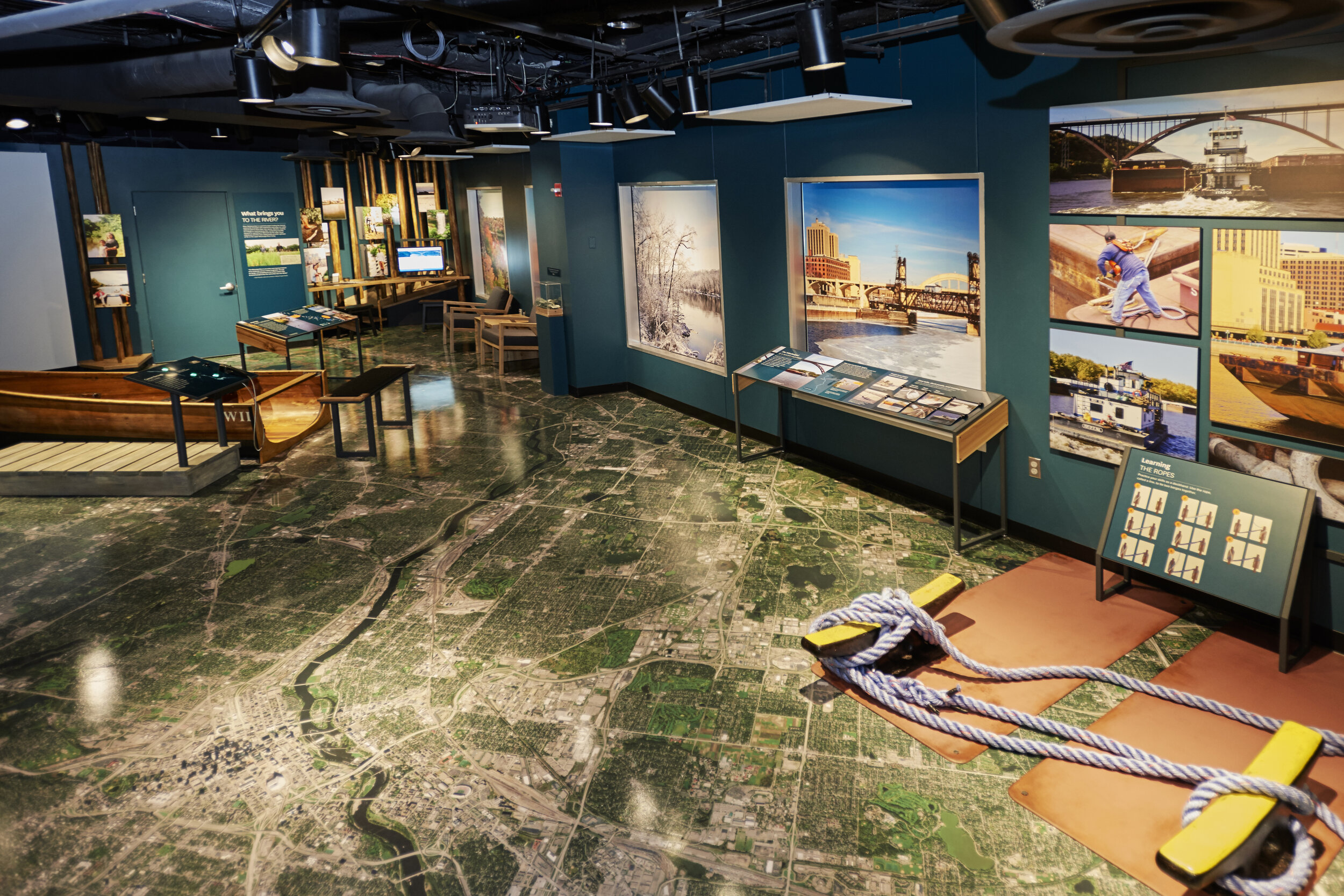Women of the Mississippi: Abby Olson
By Karen Katz, Outdoor Recreation Planner, Mississippi National River and Recreation Area
Abby Olson, Park Guide, Mississippi National River and Recreation Area
First year working for MISS/NPS: 2008
Abby Olson is a part-time permanent park ranger. She is a fixture of the park visitor centers, formal education programs, and is a certified NPS motorized boat operator. Her connection to water started at an early age:
“I started swimming when I was very, very young. That was my first appreciation of water. Then I started sailing and canoeing and kayaking after that. You have this appreciation of how you’re interacting with nature when you’re using non-motorized boats. You are at the will of the wind. A motorized boater is a better motorized boater if they have [used non-motorized boats] because they have less control of where they are going. You have this relationship with the river because you understand what it means to be a part of it rather than just taking control of it.”
Though her connection to nature developed at an early age, she only discovered the National Park Service with a bit of luck. In 2008, Abby was newly returned from a term of service in the Peace Corps, stationed in Peru, and was looking for a job. A family friend reached out to her and floated the idea of being a park ranger. “I liked the idea of being outdoors and furthering my knowledge of biology and ecosystems. Being able to continuously learn while being at a job really piqued my interest.”
Abby used her non-competitive status from the Peace Corps to be hired for her initial part-time, seasonal position. Over the years, she has worked other part-time jobs out of the park service, which complimented and boosted the same skills she uses as a park ranger. Though she may have stumbled into the career, she has made a conscious decision to stay:
“Teaching kids how to appreciate nature is a big part of it. And also being a leader for a lot of them. Being a woman in uniform is really important to me. Showing little boys that girls can do this and also showing little girls that they can do this is super important. People are going to interact with me, a woman, in uniform, and that is pretty important [to me].”
Her first summer, Abby was immediately immersed in interpreting the park at the Mississippi River Visitor Center. She admits she had hardly even been in the park at that point and said it felt odd to be fielding visitor questions. Abby made a concerted effort to get out and explore the park on her own. Doing this independently allowed her to experience the park as many first-time visitors may and that has shaped her interpretive style.
On the floor of the Mississippi River Visitor Center is an aerial photograph of the park and surrounding areas. It’s a great interpretive tool and park rangers and visitors are always tracing the river with their feet. Early on, Abby would identify places on the map by referencing the highways. “Now I look at it by the shape of the river. I’m not even seeing the highways anymore. It’s all about the river and how it’s gone through this landscape and how [people] have reacted to that.”
The other half of Abby’s job is formal education programming. If someone needs a program to be done for 4th graders, Abby is the ranger to do it.
“I love working with children, I think that is what I was meant to do. I thought when I was in college that I was going to be a research scientist. But I think what I was really meant to do is teach children. I just like to interact with them. I like to tell them something that gets a story out of them; to get them to want to tell you something from something you’ve told them.”
A regular program at the park is Big River Journey. For a long time, the ecosystem station was boring. Abby noticed a lot of glassy-eyed students while she was teaching. When she compiled the teacher and student surveys post-field trip, she noticed that station was rarely mentioned. A few years before that, Abby had done river otter surveys for the park and built a great knowledge of otter behavior and habitat. She rewrote the ecosystem station curriculum, shifting away from a broad emphasis on the floodplain forest to focus on the ecosystem from the point of view of a river otter. She shies away from taking full credit for the change, but I think she’s being modest. Now when introducing the station she asks students to “flip a switch” and turn on their otter brains. The kids hang on her every word and it receives rave reviews on the student and teacher surveys.
When asked what she wants people to know about the park, Abby replied, “I want everybody to know that this space is here in the Twin Cities for them.”




